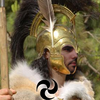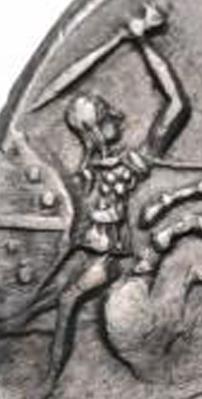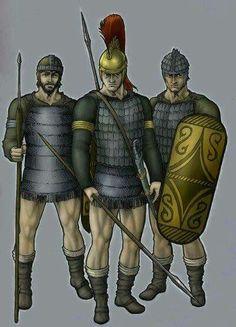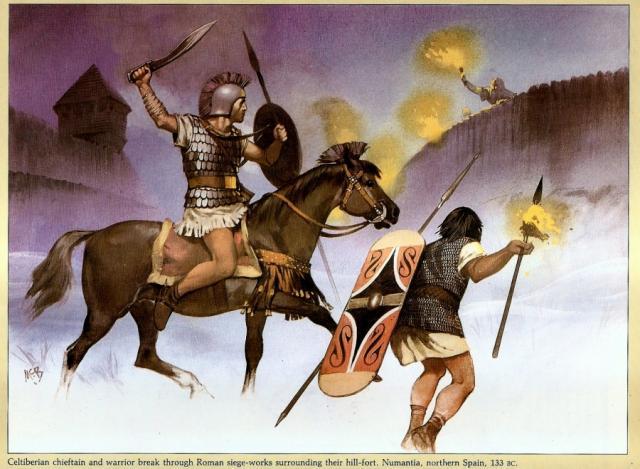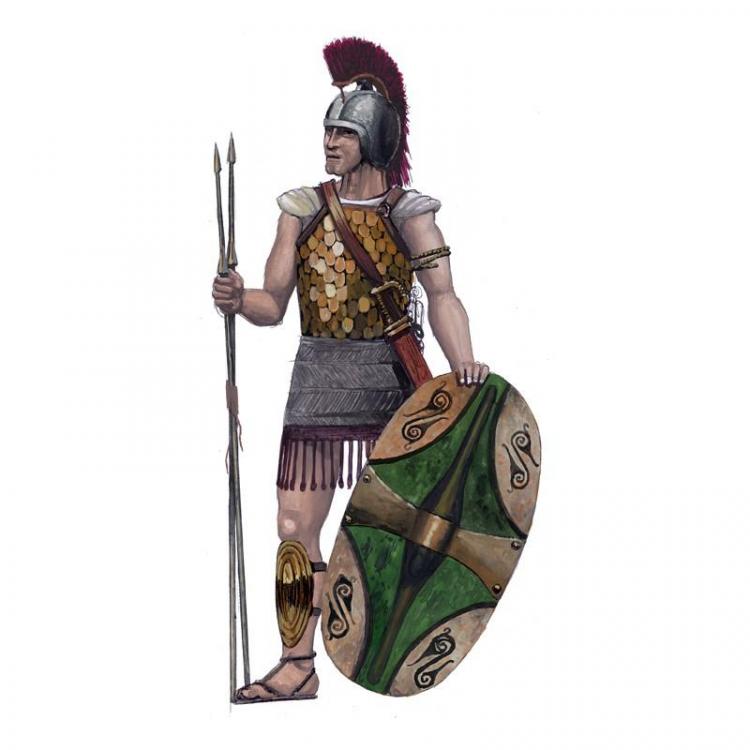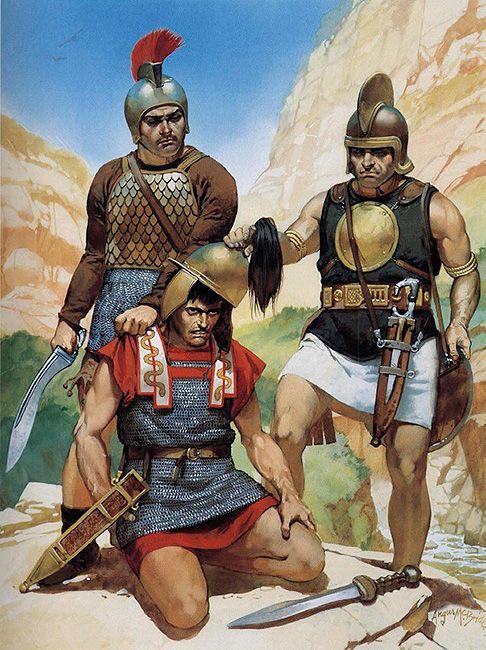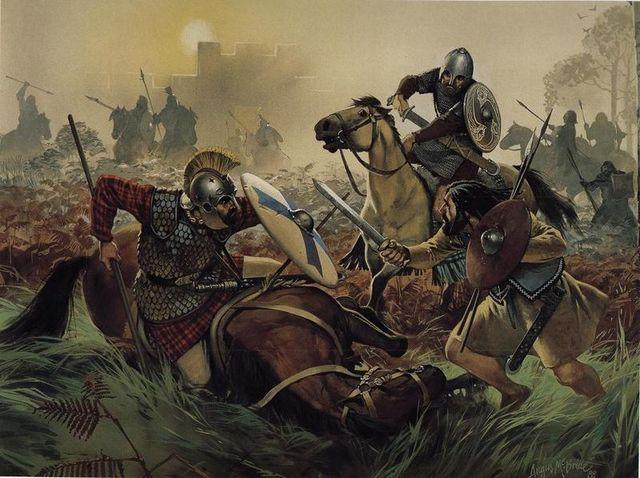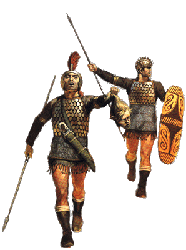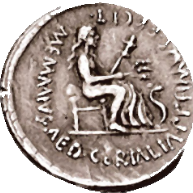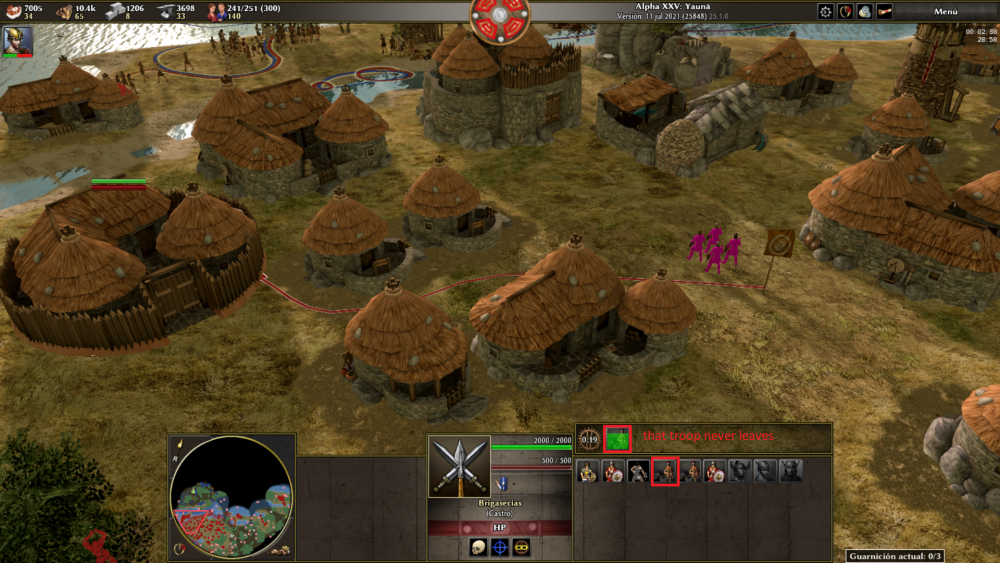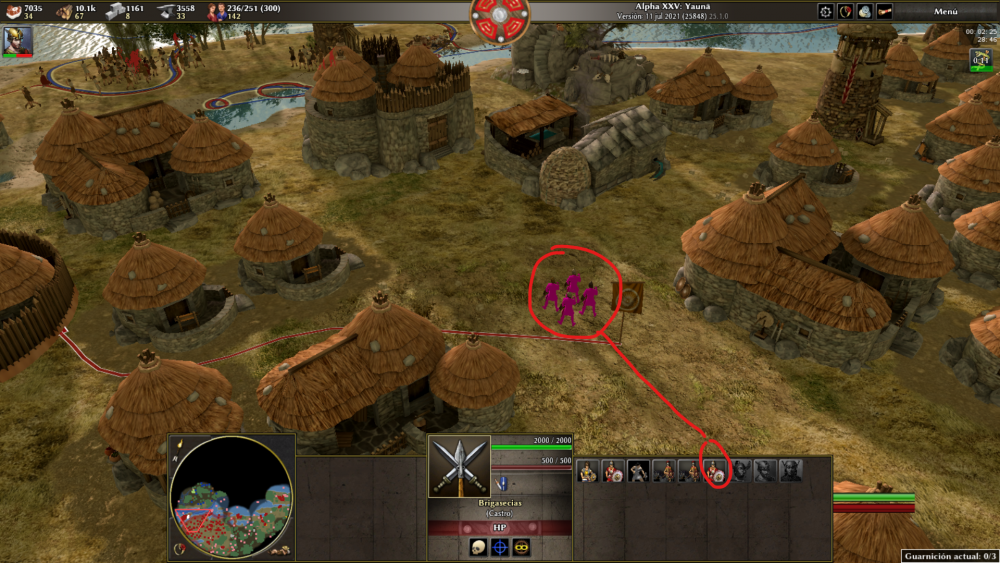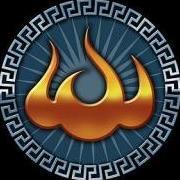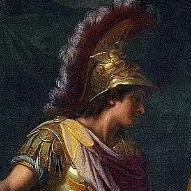Leaderboard
Popular Content
Showing content with the highest reputation on 2021-09-19 in all areas
-
A Quick Introduction Hello Everyone! Since this is my first post on the 0AD forums, i would like to start with a quick introduction. I've come to know about 0AD quite recently and been playing it since May 2021 (single-player). I have played quite a few RTSs already (namely Age of Empires II, Age of Mythology, Warcraft 3 and StarCraft), but this was the first game that i ever saw a Batch Training mechanic and i love it! Fun aside though, i also started doing some tests to try and use this mechanic to it's fullest potential. In this regard, 0AD sets itself apart from those other games i mentioned because it is an Open Source Project so I could go through the code more easily to unearth the formulas, modifiers, etc in order to make my analyses. So without further ado, let's do some math! The Mechanic Unveiled First things first: How is Batch Training implemented? As far as resource costs and population growth is concerned, there are no changes, but training time (for each individual unit) is greatly reduced using the following formula: BatchTime = BaseTime * (#Units ^ Mod) Where: BaseTime = The time it takes to train a single unit #Units = The size of the group Mod = Modifier, a value that is intrinsic to the Building Type and determines the reduction in Training Time. List of Modifiers: Houses: 1.0 (meaning, Batch training in houses does not reduce training times) Corral, Market, Siege Workshop, Elephant Stable, Special Buildings: 0.7 Barrack, Stable, Fortress, Civic Centre, Carthage Embassies: 0.8 Let's illustrate this with an example: Unit: Spartan Hoplite – From Civic Center (Mod: 0.8) BaseTime = 10 secs #Units 1 by 1 - Time (s) Batched Time (s) 2 20 17.41 3 30 24.08 4 40 30.31 5 50 36.24 So, as seen in the exemple above, Batch Training reduces the training time of units considerably and, on the surface, it appears to be always better to Batch train instead of training 1by1. However there is a tradeoff. You'll only have said units at the end of the entire Training period (which is longer than the time to train a single unit). What this means is that 1by1 will give you readily available units sooner, but in smaller quantities, while Batching will give you readily available units later, but in larger quantities. This is a point to consider, specially in the early game, where we want to gather resources as fast as possible to build up our economy and our army. If we call the amount of time a unit is out on the map ActiveTime (as in it can perform actions such as move, gather, fight, etc), we can say that the method that gives us more ActiveTime overall will be better. Analysis Let's use our Spartan Hoplite to understand this problem. Spartan Hoplite – From Civic Center (Mod: 0.8) BaseTime = 10 secs Let's say we train 2 units using both methods: From our table we gather that 1by1 will produce a unit after 10 secs and another after 10 more seconds, while batching will produce 2 units after 17.41 secs. This means that both methods don't generate any ActiveTime in the first 10 seconds (since no units are out yet) and will start generating the same amount after 20 secs (when the second unit of 1by1 gets done). So what we can compare is the amount of ActiveTime generated after 10 secs but before 20, for both methods. Do note that each unit out on the map generates 1 sec of ActiveTime for each in-game second. This means that 2 units will generate 2 secs for each in-game second and so on. With that in mind we can do the calculations and reach the following table: #Units = 2 Time Elapsed (s) 1 by 1 Batching #Units Produced ActiveTime(s) #Units Produced ActiveTime(s) 0 0 0 0 0 10 1 0 0 0 17.41 1 7.41 2 0 20 2 10 2 5.18 #Units = 3 Time Elapsed (s) 1 by 1 Batching #Units Produced ActiveTime(s) #Units Produced ActiveTime(s) 0 0 0 0 0 10 1 0 0 0 20 2 10 0 0 24.08 2 18.16 3 0 30 3 30 3 17.76 #Units = 4 Time Elapsed (s) 1 by 1 Batching #Units Produced Total ActiveTime (s) #Units Produced Total ActiveTime(s) 0 0 0 0 0 10 1 0 0 0 20 2 10 0 0 30 3 30 0 0 30.31 3 30.93 4 0 40 4 60 4 38.76 As we can see, although batching reached the total amount of units faster than 1by1, that amount of Active time generated in the same period heavily favors 1by1. Now let's see if this trend continues and calculate the percentages to see by how much 1 by 1 is beating Batching. # Units 1 by 1 Batching Percentage (%) Total ActiveTime (s) Total ActiveTime(s) 2 10 5.18 51.8 3 30 17.75 59.17 4 60 38.74 64.57 5 100 68.81 68.81 6 150 108.42 72.28 7 210 157.97 75.22 8 280 217.76 77.77 9 360 288.04 80.01 10 450 369.04 82.01 27 3510 3519.02 100.26 Interesting! As we increase the amount of units trained, Batching slowly catches up to 1 by1 and by the time we reach 27 units, Batching will match 1by1 in Total ActiveTime generated. We can also see that any number of units above 27, Batching will start becoming more and more efficient. Naturally, 27 units costs an unfeasible amount of resources and time (specially in the early game) so we can conclude that by our metric of ActiveTime 1by1 is by far more productive than any amount of batching we can get in the early game. Conscription In the City Phase (last phase) we get access to the Conscription technology (in the barracks and the Stable). This technology lowers the Batch Training modifiers by 10% (Mod = 0.8 to Mod: 0.7) and that is a huge change. Lets do the same calculation, but now with Mod = 0.7. # Units 1 by 1 Batching Percentage (%) Total ActiveTime (s) Total ActiveTime(s) 2 10 7.51 75.10 3 30 25.27 84.23 4 60 54.44 90.73 5 100 95.74 95.74 6 150 149.69 99.79 7 210 216.68 103.18 This means that in the late game (after researching Conscription), given enough resources, any Batch amount > 6 will be more efficient than training 1by1. That is also valid for all the buildings that naturally have Mod = 0.7. Discussion So, the main question that arises from this analysis is: Is the Batch mechanic useless in the early game? My answer is NO and here is my reasoning. THE GOOD: - Batching is great for early game rushes and timing attacks: since we'll be able to pump units much faster that by building 1by1 and we can't afford to build multiple barracks or stables in the early game. - Batching is great for dumping excess resources: Stockpiling resources isn't advisable, since resources don't produce anything while sitting in the bank. Unfortunately it happens sometimes, so if we find yourselves with excess Food, we can just build a Stable and Batch train some horses to explore the map and harass our opponent. - Batching gives options instead on limiting them: If Batching was universally better than 1by1 then there would be no point in having having a choice. By having it's drawbacks, Batching gives more variety to the game by enabling certain strategies. THE BAD: - Batching is less flexible than 1by1: By Batching, we sink a lot of resources and have to wait a considerable amount of time for them to bear fruits. This means that if we need to cancel some of our productions in other to gather resources to build an upgrade or advance phases, the amount of time lost training that group can be great. - Batching eats a lot of population: Population is also a resource. So if we want to Batch train a large group we need to have space available. Also, we'll need to quickly build houses to open more space to not get capped and keep producing out of our other buildings. THE UGLY: - Batching is eclipsed by 1by1 for economy: Since much of our goals in the early game is to boost our economy as fast as possible (and we do that by maximizing ActiveTime), batching does the exact opposite of what it's expected of it. And now in A25, the introduction of the Autoqueue mechanic basically kills batching even more for early game economy. Closing Remarks Well, that's basically all i had to say about the subject. I hope this post wasn't too boring and you were able to enjoy it. I would also like to read your opinions and comments on the matter. If you agreed or disagree with this analysis and why? Any concerns or constructive criticisms are always welcome. See you on the forums and have fun! ===================================//================================== TL;DR (just in case) Which is more efficient in the early game: training in batches or training units 1by1? Well, 1by1 will give you readily available units sooner, but in smaller quantities, while Batching will give you readily available units later, but in larger quantities. By comparing the Total ActiveTime (the amount of time a unit is on the map, ready to move, gather, fight, etc) in both approaches, we get: - From the Barracks, Stable or Civic Center: 1by1 is more efficient if the batch size is smaller than 27. Since batches of 27 are basically impossible in the early game, for economy purposes, 1by1 if far better than any amount of batching. -Batching is better than 1by1 in strategies involving rushes or timing attacks. ==================================================================== EDIT 1: So, considering what @Jofursloft and @Freagarach have said in the their posts, i redid the calculations for batching and 1by1 considering more productions cycles and the ProgressTimeout delay that autoqueue gives. To avoid making this post bigger than it already is, i placed the the calculations and the result tables in the attached pdf. In general, smaller batches (2 to 3 units) break even with 1by1 by the 3rd production cycle, while bigger batches (5 and upwards) break even by the second production cycle. Things are a bit less efficient if you use autoqueue, but not by much. So, as long as you can batch units constantly, batching will always be better than 1by1. Also, the bigger the batch size, the better. Batching Revisited.pdf2 points
-
Second video: Macedonian side is using spear cavalries to flank Mauryan archers. In vanilla, it's better not to do this flanking manoeuvre. 1200603073_RgDemo4-1.m4v2 points
-
1 point
-
Hello everyone! I'm Nagasushi. Some days ago I tried to register a forum account, but unfortunately it didn't get approved, so I have to borrow this account from someone to make a post for my new mod Res Gestae. Please download from my Github link here or at the end of this post. https://github.com/Nagasushi2021/Res_Gestae Res Gestae is intended to be a 'small overhaul mod', which changes many aspects of the game without diverging too far from vanilla, or adding too many complicated mechanics that will be hard to be adapted for the future versions of 0ad. We endeavour to provided a balanced gameplay that will be attested by mathematical calculations and matches between AIs and humans. We will also aim to make sure that the AI included in this mod will employ diversified strategies and tactics at the difficulties that will suit everyone, from absolute beginners to the multiplayer pros. Furthermore, there is an emphasis on the tactics, strategies, and particularly on the viability of diversified gameplay styles. Also as the name suggests, we draw our inspiration from real world history, which means we will try to emulate the military tactics they used, their army composition, and more particular features of each civilisation. Outline of the initial version: Pathfinder: twisted pathfinder parameters in order to prevent unit overlapping and exceedingly smooth movement. Units are able to block enemies properly. Subject to future changes. Unit changes (only done for citizen soldiers, need more testing): unit balance, and various changes making tactics and micromanagement possible. AI: I have made a bot called Catilina based on Petra bot, and tested it with @Yekaterina. Currently the medium difficulty is roughly equal to a 1300-1400 level human player. Note that this bot is intended for testing rather than competing against human players at the moment. We recommend 'balanced' behaviour, and 200-300 pop, very low to medium resource, small to medium map size settings. It should work on any map not divided by water regions (e.g. mainland). If you want to see two Catilina bots fighting against each other, we recommend small Corinthian Isthmus map, since they prefer to head to the opponent's base rather than fighting against its army directly on other maps. Techs: Merged damage techs and added movement speed techs to encourage combined army. ========================================================================================================= 0.0.4 Preview (not yet available on github) This update will focus on champions and clean up some existing civ features that will not be presented in Res Gestae, paving the way for civ differentiation in the next update. It will also include other gameplay changes and hotfixes. Hotfixes: Fixed some incorrect unit stats. Fixed champion movement issue (resulted by low returning rate+pushing mechanic+pathfinder parameters, reported by various players) Civ Features: Removed some existing civ features. Buildings: Towers have bonus against cavalry. (Towers had little use against early cav rush and they usually considered as not worthy in early game. This update makes towers the most effective way to defend against cav rush - an investment that can actually keep your base safe. And it won't a proper siege much harder. So consequently, if the rushing side finds the opponent's base well defended by towers, it would be a better idea to find some hunts or rush another player instead. This helps with building a rush-boom-turtle-rush counter dynamic. Units: This updates contains the initial changes for champions: based on my mathematical model fr production and battle strength, champions, particularly melee infantry types, have much better cost efficiency than in vanilla a25. This makes waiting for phase three a good choice alongside attacking with citizen soldiers and rams in phase two. Different civs have genuinely different champions, with their pros and cons. Further balancing adjustments will be needed. Mercenaries: they are based on a23 mercenaries now - good at fighting; bad at gathering; expensive but fast to train Siege units stats changes AI: various minor AI changes ========================================================================================================= 0.0.3 The first major update of Res Gestae: AI difficulties: There are nine AI difficulty levels now - I found the highest one most entertaining for myself. Note that the rating intervals are merely guidelines, which do not reflect your level in vanilla multiplayer. AI: Various improvements including use of towers, change of combat behaviours, adjustments for gameplay changes, basic support for tiny map and more. Diversification: Catilina has different behaviours in each match - it might rush or choose to attack at different time. Gameplay changes: Arsenal and rams are available for all factions in Phase 2, which encourages more diversified strategies other than booming and attacking when pop cap is reached. Consequently, phase 3 will give players much better options to boost economy and army strength (in this version some p3 techs already have reduced cost). Champions will be addressed together with civ differentiation in future updates. Techs: reduced cost for many p3 techs and phase3 itself. Units: slightly changed gathering rates. Rams have significantly more health and lower damage - siege will last longer and winning battles is much more important for both sides: attacking side should not overspam rams; defending side should not try to 'pick out' rams before defeating attacker's army. Buildings: economic buildings and palisades are much easier to destroy. Lower hack resistance for almost all buildings. Stones towers deal more damage and cost more resources - it should be a good option to garrison towers when you are under attack. Slightly better vision for all towers. Other changes: slightly changed formations. 'Random' draws each civ with equal probability now. ========================================================================================================= Planned features that will NOT be implemented in recent updates: (due to compatibility issues or amount of work required) AI border contact management - we do not recommend having AI closer than 1v1 small mainland (e.g. 1v1 on any tiny map, or 2v2 on any small map) Naval overhaul and AI naval management UnitAI changes - compatibility issues with current release and svn AI defence overhaul - Catilina is using the defence modules of Petra, which should be substantially reworked. Only minor improvements will be implemented in recent updates. ========================================================================================================== MOD IS NOW PLAYABLE. COMPATIBLE WITH ALPHA 25. https://github.com/Nagasushi2021/Res_Gestae Still a work in progress. Please report bugs and suggest balancing and gameplay ideas1 point
-
Wildfire Games, an international group of volunteer game developers, is happy to announce the re-release of 0 A.D. Alpha 25 “Yaunā”, the twenty-fifth alpha version of 0 A.D., a free, open-source real-time strategy game of ancient warfare. This version is a maintenance release. Gameplay remains untouched and both versions of Alpha 25 remain multiplayer-compatible. We strongly advise you however to upgrade to benefit of the following fixes: Ranked matches did not longer grant points in the lobby. Mod installation no longer require restart. Mod installation no longer prints errors when installing mods by double-clicking Mod installation now overwrites the existing mods to allow for easier updates. Fishes are now easier to spot on lowest settings with the addition of seagulls. The team wishes to apologize for the inconvenience and hopes you will be enjoying your time playing 0 A.D: Empires Ascendant.1 point
-
Your own reference says "it is in any case clear"..... the other coins feature other representations that are not Roman either, or at least not just roman, as you yourself mention. As for not seeing, or ignoring, the figure of a "barbarian" in the representation on the left, we see that someone has problems with their eyes.... of all sorts, even if they ignore everything that has already been said, specifically about the currency in question . Liria's ceramics are even clearer. Although, in all tribes of Celtic origin, scale armor is registered, but in the Celtiberians and Lusitanians they are not.... they are some kind of cloth armor. The reference you make: It expressly contradicts Estrabon, as I've already said, but you completely ignore it. Between Estrabon and these "exotic" theses, to say the least, I take Estrabon. or.... let's figure the Celtiberians and Lusitanians no longer with lorica squamatas, but with some kind of cloth armor... !1 point
-
how @Ardworix I believe that the three Lusitanian heroes should be: Cauceno, Viriato and Sertorius. with Sertorius, you could add Roman siege engines and Roman ships in phase 3. also the "Lusitanian ambusher" champion of phase 2 would be very interesting and useful, also the Frisian field (for Iberians and Lusitanians) created by @Duileoga for equipment bonus I can think of 3 options: 1: that the cost in metal be reduced to champion troops. (less op) 2: that the technologies and phase change have a reduced cost. (more op) 3: regular troops and mercenaries should have a lower metal cost. (regular it would be interesting to add some mention to rio tinto, or in the name of the equipment bonus or some bonus/technology, unique to the faction.1 point
-
I take this into account. Also, with this method, we don't lose any height precision. We have access to the full 65536 discrete height values. I strongly suggest to allway keep a copy of the original file you're working on, and only apply the linear curves in the last steps, as indicated in this tutorial. Just don't be afraid to apply some curves with some crazy small output value. I can guarantee the 16bit exported file is still very precise! :-)1 point
-
When I have some time, I'd also like to do a guide on how to design very nice height maps with GIMP. Here's an example enhanced with some shading for better viewing. P.S: uploading a 33kb jpg fails, I'll try another time.1 point
-
Hi everyone, Thanks to Palaxin for his tutorial. I was frustrated by the quality of the Atlas import, and have decided decided to tackle the expert method. The problem for me was that a script is needed, because of the way the .bmp files are encoded. After some research, I found out that .tif file have a much friendlier encoding for our use, and we can literally copy-paste the pixels block inside the .pmp as is. As long as the tif file is correctly formatted. The good news is that GIMP nowadays supports 16 bits integer images and export! I wrote a detailed tutorial, please tell me if something is unclear. Here we go: Preparation Create and save a basic map with the Atlas. Resize it and note the size, it's very important. The map is made of two files: a .pmp and a .xml. In this tutorial, we will paste the height map into the pmp. Sizes Your initial height map can be any size. I've included a resize step in the process. But, depending on the size selected for your map in the Atlas, the final .tif height map must have the right number of pixels. Here are the corresponding sizes in pixels: Tiny: 129x129 Small: 193x193 Normal: 257x257 Medium: 321x321 Large: 385x385 Very Large:449x449 Giant: 513x513 Note 1: It is essential that all your exports are: uncompressed tif images, grayscale, with 16 bit integer precision, and no alpha channel. Every other setup changes the number of digits for each pixel, and will mess up your map quite badly. Note 2: With the method here, the map will become a mirror copy of your original height map. If you don't want that, you can add the following point to the "Export operations": 2a) Image > Transform > Vertical mirror I. Elevation file export with GIMP IA) (only once per size) Create a a uniformly white image and follow the export operations. This is the .tif file used to find the extent of the pixels. You need to do that only once for each map size. I suggest you name it "white_template_size.tif". IB) Open your elevation file in GIMP and follow the export operations. If it's an .xcf file, be careful NOT to hit Save at any point during the operations. Export operations 1) Image > Flatten Image this ensures there is no alpha channel and only one layer 2) if you original file is not the right size: Image > Scale Image, select the "pixel" unit and enter the right size. 3) Image > Mode > Grayscale 4) Image > Precision choose 16-bit integer, linear light 5) (IB only) File > Export choose a name for your file, add something like "_full_height", and add the .tif extension choose Compression : none, and uncheck all boxes export note: you will probably have to try different curve settings, so it's useful to keep and reopen the "full_height" file for subsequent tries. 6) (IB only) Colors > Curves check the "linear" icon on the top right select the top-right point of the curve in the "output" field, enter a small number (I usually start with 5.00) and validate note: you can use Colors > Levels as well. Select "linear", enter your value in the rightmost "output levels" field. 7) File > Export As... choose a name for your file and add the .tif extension (let's call it MyMap_size.tif) choose "Compression : none", and uncheck all boxes export II. Height map import with hexadecimal editor You'll need an hexadecimal editor which allows to select large blocks with SHIFT. On Linux, I use the Bless Hex Editor. 1) Open "white_template_size.tif" and MyMap_size.tif with the hex editor side by side. note: on the editor, the cursor's position is referenced as "Offset" followed by an hexadecimal address 2) On the white_template file, notice that most of it is filled with "FF". This tells us where the actual pixels start and end. Go to the end of the file and place the cursor just after the last "FF". It's usually a "12". Read the offset. 3) On the MyMap file, go to the end of the file, and place the cursor at the exact same offset. It should also be a "12". 4) Scroll back to the start of this file. If you observe the white_template, you should notice that there are 8 positions before the "FF" start. Back to MyMap, count 8 double-digits and SHIFT+clic on the next one. A big block should be selected. COPY. 5) Open the .pmp file with the hex editor. Place the cursor at offset "10". It means 16 in base 10, so the cursor is actually at the 17th position. 6) Press the "INSERT" key. The info bar should now indicate "OVR" instead of "INS". 7) PASTE. 8) Save, open your map in Atlas. The relief is probably too accentuated, or too flat. Repeat the operations, starting from Ib) 6) above. Adjust the output of the curve with a different value. Don't forget to always set the curves in linear mode. Cheers, Pascal1 point
-
You guys can scoff all you like, but based on what I'm seeing and reading I'd lay even money that AoE4 is going to be a game that dictates the expectations and mindshare of 0 AD for the next 5-10 years. Let's talk about the good things they are doing: The game runs smoothly in a performant, modern, 3D engine with serviceable graphics that will almost certainly improve over time thanks to patches and modding. The gameplay we've seen preserves most of the complexity of AoE2's timeless systems, while also adopting a much more asymmetric roster of civilization designs. (Some of these new civilization concepts might significantly expand the design space of historical RTS.) It explores some interesting micro-gameplay concepts. History RTS tends to fixate on projectile dodging and kiting, which are high skill floor and low ceiling, so having a high profile game try to showcase something else is good. AoE4 has faster matches and tech progression than a lot of games in its space. Military buildup is also fast and action looks like it will start early. This is a nice concession to the reality that the people who grew up with this genre are now adults under a lot of time pressure. Non-rush games don't need to take 50-60 minutes to resolve. The game is doing some really interesting things with contextual doodads around buildings. The game's ambient sound design is reportedly superb - although there is clearly still room for improvement. (ding ding) It is releasing in a finished (or nearly finished) state on October 28, 2021. This is all amazing in my book. I'm not sure good enough to usurp AoE2's e-sports throne. It might not even be enough to prevent it falling into semi-obscurity like the other entries in the Age series. But for 0 AD it will do one thing that is tremendously important: demonstrate that it is possible to make a high quality, modern re-adaptation of the AoE2 design philosophy. AoE4 is (in all the ways that matter to a broad audience) what 0 AD is supposed to be. It's the promise this project was sold to us with, and it's coming to you in a few weeks from the hands of a bunch Microsoft MBAs who are more interested in this quarter's profits than making great games. This stings to anyone who believes in FOSS, but the answer is not to nurse our insecurities. It's time to start taking notes. What works and what doesn't? What should 0 AD copy and what can it improve on? Can Wildfire use any of their design research to break out of its multi-decadal development pace? These are important questions, because if AoE4 is good (or even just pretty good) 0 AD will have to change its sales pitch to remain relevant. "Sort of like AoE4, but antiquity, and you get what you pay for" will not cut it--particularly if mod support is coming.1 point
-
1 point
-
@alreWell, I find it "nice" and admittedly have not paid attention to the different costs and profits. Maybe I should. But it's good to know the hint from @Palaiologos Thank you both!1 point
-
"for every map you can independently choose a biom, this is the thing I like most of AOE 4" -quote from one of the videos above. I like the torching, although a better animation may actually be that soldiers move around a torch near the ground next to the building.1 point
-
why would you garrison a trader into merchant ship for +20% profit, when you can make another ship for +100% profit? traders aren't cheap.1 point
-
I have been testing the mod, I like how the Lusitanians are thought, it is well thought out, the last defense of women, the Vetons mercenaries can give quite fast support, now come the bugs found. 1: you start with javeliners and swordsmen, but in the cc you can make: slingers and spearmen, something is wrong. 2: in phase 1 you have access to all infantry, is it too much? 3: precision bolt technology in the arsenal, but they can't have catapults, or rocket launchers. 4: the phase 2 KAI darsena (Phoenician allied) only costs 200 wood, it should cost some metal or stone more... 5: in barracks you can't make elite swordsmen and for their special building you have to use that technology and the same with the elite cavalry. soon it will be a big faction and I need it in the game, the equipment bonus could be something related to mining or lowering the cost of metal, troops, technology or both. depending on how it's done, could any unit of champions be upgraded to phase 2?1 point
-
If you have a sea merchant trade route going between two docks and make land traders, you can set the rally point of the land traders market to one of the merchant ships(while en route) and they automatically are garrisoned into the selected ship. Where/how it is determined that the ship will stop its course to load the traders, idk. But it is automated to that extent.1 point
-
@alre @ChronA @LetswaveaBook Give it a try. I think this is what you guys want to do with the pathfinder. Just make sure to use attackmove (ctrl+click).1 point
-
Otherwise i agree that 0 AD looks better, or maybe just more realistic overall. Also i dont see why i should spend 60€ if i can play 0 AD for free.1 point
-
This is something I was also thinking about lately. On my machine the game runs smoothly until 600 units max (world population) and then the first lag appears and judging from team game youtube videos, this seems to be the case for many people. And since most of the "big" performance optimizations I know of are by now already implemented (e.g. multithreading, unit pushing, pathfinder optimizations), maybe part of the solution to solve the lag could be to say: the engine supports less units, so let's design the game and the stats accordingly (i.e. make every unit worth more as @ChronA said)1 point
-
https://github.com/JustusAvramenko/delenda_est/commit/f0a6a3fb9025b4ece7db7c24a292bc8906a9cae71 point
-
Nah it's not linked to seagulls but with @Freagarach and @Angen' changes1 point
-
1 point
-
Forgive me for asking but how different are the Lusitani from the Iberians, gameplay wise?(page 4 onward) While these have acess to mercenaries, the roster seems unchaged in function. The builds sure have a distinct look to them and the Trade post from Carthage is a nice touch. The faction bonuses are bit bloated no? Fortifications and essencially spartan women? Plus the temple aura that both heals your troops and damages the enemy, not to mention the ability to train CS from houses. If I am not mistaken these even have the same unique armory tech that the Iberians have. Despite all this I do have to say that our spaniard put alot of love and work in to this! Great job with the models, really.1 point




(1).thumb.gif.b5909d3df98a8ec15dc452423f219bc5.gif)
